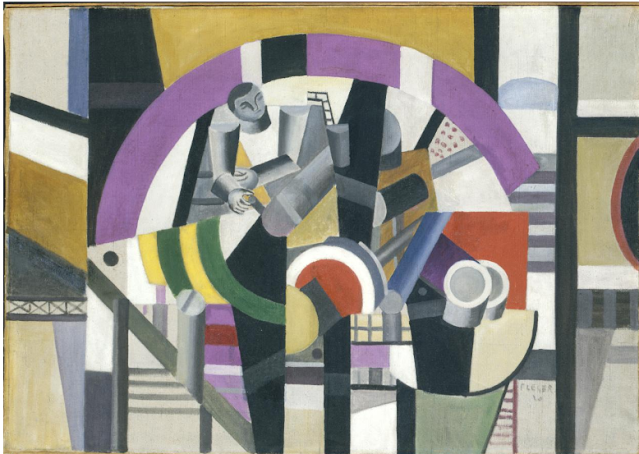Georgia O'Keeffe, "Cliffs Beyond Abiquiu, Dry Waterfall"
Are you ready to give your imagination a fun exercise? American artist, Georgia O'Keeffe (1887-1986) is always a challenge and she certainly provides us with one today.
Cliffs Beyond Abiquiu, Dry Waterfall is an oil from 1943. Abiquiu is a small community near her ranch in New Mexico. In 1943 she was a well accepted American artist, and although married to Alfred Stieglitz, the marriage at this point was not doing well. So life found her traveling a great deal, and buying a part time residence here in New Mexico. She did not make her move permanent until 1949, after Stieglitz death in 1946.
Many of O'Keeffe's paintings have created great analysis by critics seeing things into them that O'Keeffe consistently denied. And, so, I wonder. If Stieglitz had been a faithful husband and the marriage strong, would she have felt the need to focus into nature the way she did?
As many of her flower works, this painting zero's in on a specific area. The colors are probably reasonably true, but still, very feminine. We are looking at a cliff, and the title tells us it is a dry waterfall. But there is life. The bright green flora indicates the rains do come. Soft and light purple/blue creates curves and shadows. Our center of attention is straight down the middle, fluctuating slightly as we angle down to the green at the cliff floor. The only question I have is the almost straight lines creating rectangles in what seems to be a flat wall on the upper half. This suggests human hands at one time cut the space. My guess is that O'Keeffe simply painted what she saw and gave it her own unique interpretation.
Cliffs Beyond Abiquio, Dry Waterfall is an oil on canvas. It measures 30 inches tall and 16 wide. O'Keeffe bequeathed this work to the Cleveland Museum of Art in Ohio, where it remains today as part of their permanent collection.
So, here is my interpretation of this painting, please write and tell me yours!
Make Art a part of your life, it's a beautiful thing to do.




She has taken a majestic scene and given it a soft, delicate and almost sensual appearance.. You always told us every part of a painting should stand by itself, and this surely does, The neutral colors and beautiful shading are warm and inviting. I would imagine the actual terrain is rather foreboding. The few small trees at the top connect with the lower portion of the painting. The straight lines and rectangles are a questioning addition. They do add interest and speculation! The composition reminds me of her florals. Lovely painting.
ReplyDelete